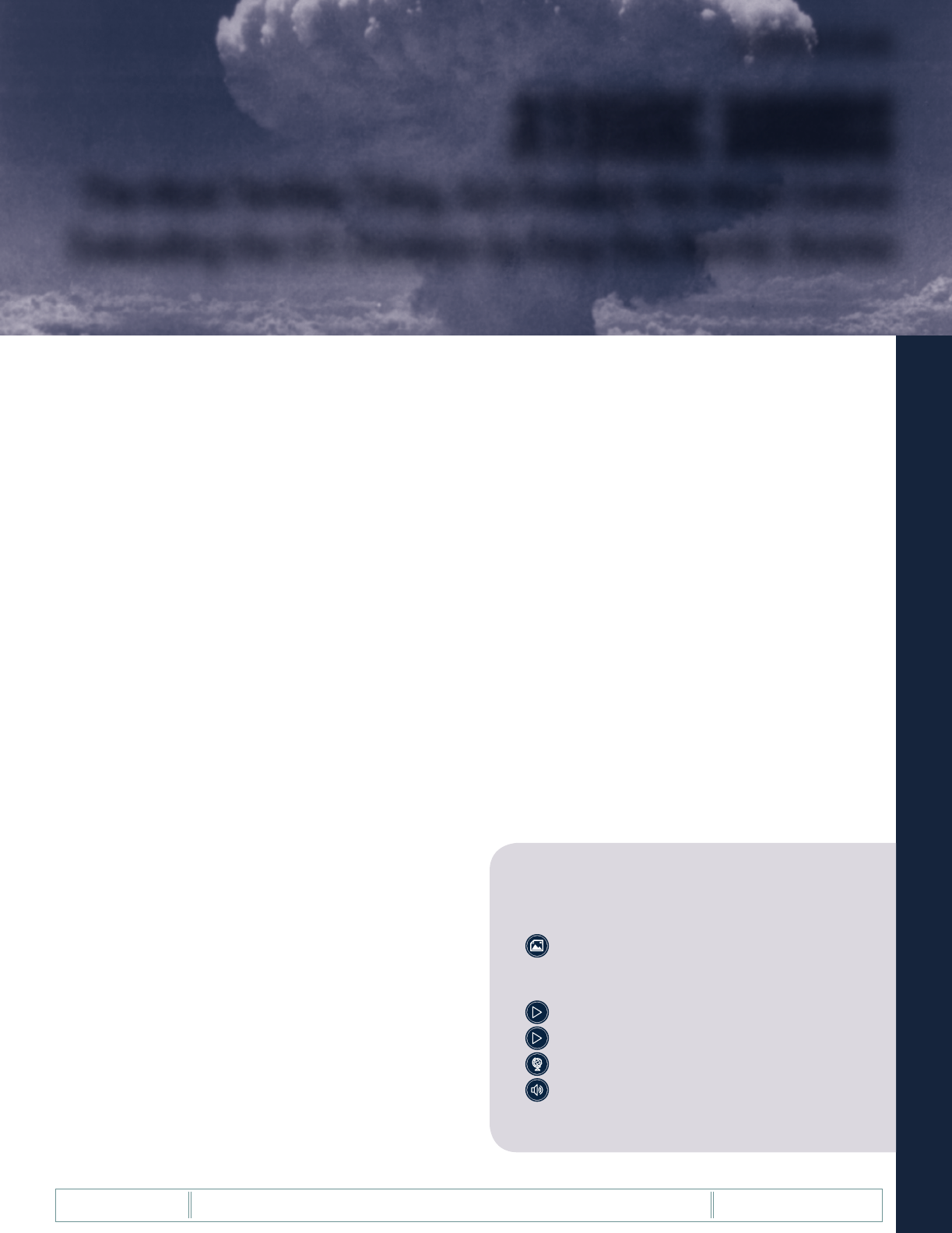
83
ATOMIC BOMBS
The War in the Pacific
LESSON PLAN
The Most Terrible Thing, but Possibly the Most Useful:
Evaluating the US Decision to Drop the Atomic Bombs
Atomic bombs
INTRODUCTION
Shortly after the first successful atomic bomb test in July 1945, President Harry S. Truman wrote in his
diary that “this atomic bomb . . . seems to be the most terrible thing ever discovered, but it can be made
the most useful.” The president’s conflicted feelings about the bomb captured the divergent poles in a
debate that has raged since he authorized its use against the Japanese cities of Hiroshima and
Nagasaki in August 1945. While some historians contend that the use of atomic weapons saved
American and Japanese lives by speeding the war’s end, others maintain that the bombs were neither
necessary nor justified since other means may have been available to end the war. In this lesson,
students engage in this debate by examining primary and secondary sources—and the evidence
contained within them—in order to determine which interpretation of the decision to use atomic bombs
they find most convincing.
OBJECTIVE
By analyzing a range of primary and secondary source materials, students will develop an interpretation
of the US use of atomic weapons against Japan and provide evidence to support their conclusion.
GRADE LEVEL
7–12
TIME REQUIREMENT
1–2 class periods
MATERIALS
This lesson plan uses evidence strips included
as inserts with the printed guide and online at
ww2classroom.org.
(Library of Congress, LC-DIG-ds-05458.)
LESSON PLAN:
ONLINE RESOURCES
ww2classroom.org
The primary source images and evidence
strips referenced in this lesson plan are
available online.
Lawrence Johnston Oral History
The Bomb Video
Operation Downfall Map
Recording of Harry S. Truman’s Atomic Bomb
Address, August 9, 1945

84
ATOMIC BOMBS
The War in the Pacific
LESSON PLAN
STANDARDS
COMMON CORE STANDARDS
CCSS.ELA-LITERACY.RH.9-10.1
Cite specific textual evidence to support analysis of primary and secondary sources, attending to such
features as the date and origin of the information.
CCSS.ELA-LITERACY.RH.9-10.8
Assess the extent to which the reasoning and evidence in a text support the author’s claims.
CCSS.ELA-LITERACY.RH.9-10.9
Compare and contrast treatments of the same topic in several primary and secondary sources.
CCSS.ELA-LITERACY.RH.11-12.7
Integrate and evaluate multiple sources of information presented in diverse formats and media
(e.g., visually, quantitatively, as well as in words) in order to address a question or solve a problem.
NATIONAL STANDARDS FOR HISTORY
CONTENT ERA 8, STANDARD 3B
The student is able to evaluate the decision to employ nuclear weapons against Japan and assess later
controversies over the decision.
HISTORICAL THINKING STANDARD 3
The student is able to compare competing historical narratives and evaluate major debates among
historians concerning alternative interpretations of the past.
HISTORICAL THINKING STANDARD 4
The student is able to support interpretations with historical evidence in order to construct closely
reasoned arguments rather than facile opinions.
HISTORICAL THINKING STANDARD 4
The student is able to interrogate historical data by uncovering the social, political, and economic
context in which it was created; testing the data source for its credibility, authority, authenticity, internal
consistency, and completeness; and detecting and evaluating bias, distortion, and propaganda by
omission, suppression, or invention of facts.
HISTORICAL THINKING STANDARD 5
The student is able to evaluate alternative courses of action, keeping in mind the information available at
the time, in terms of ethical considerations, the interests of those affected by the decision, and the long-
and short-term consequences of each.
TEACHER

85
ATOMIC BOMBS
The War in the Pacific
LESSON PLAN
PROCEDURE
1. Use the Overview Essay to introduce your students to the US development and use of atomic weapons
and to the debate among historians over the reasons for dropping the bombs, the alternatives that
existed at the time, and whether the bombs were necessary to end the war.
2. Introduce the two interpretations from historians Sadao Asada and Barton Bernstein regarding the use
of atomic weapons during World War II (page 87), informing students that they will be examining
multiple primary and secondary sources in order to determine which interpretation they find most
convincing. As you introduce the interpretations, have students identify the similarities and differences
between them and clarify difficult vocabulary.
3. Distribute copies of the Evidence Collection Worksheets (pages 91–92) to students and explain that
they will use the worksheets to gather and organize evidence according to the interpretation that the
evidence best supports. Inform students that they will also be responsible for explaining how individual
pieces of evidence support a particular interpretation. You may need to give each student multiple
copies of the worksheet.
4. Divide the class into groups and distribute one set of the images (pages 88–90 and online at
ww2classroom.org) and the evidence strips (available as an insert with the printed guide and at
ww2classroom.org) to each group. Alternatively, you may want to have students work in pairs, assigning
each pair a single evidence strip or image to examine and discuss before rotating to analyze additional
sources.
5. Instruct students to assign each image and evidence strip to at least one interpretation and to record
that evidence and an explanation of how it supports the interpretation on the appropriate Evidence
Collection Worksheet. Remind students to be attentive to the date, origin, and type of each source they
are examining and to consider how those features affect the source’s reliability. To model this exercise,
you may want to highlight evidence from one of the strips and/or images that supports each
interpretation and provide explanations for each of those pieces of evidence before students practice
independently.
6. After students have assigned each source to an interpretation, have them identify the interpretation
for which they have compiled the most convincing supporting evidence and explanations.
7. Have students engage in a historical debate about their preferred interpretations, drawing upon the
evidence they gathered to support their claims.
ASSESSMENT
You will be able to assess students’ understanding of the relevant standards through the notes they take
on their Evidence Collection Worksheets, their discussion, and their homework assignment.
EXTENSION/ENRICHMENT
• For homework, have students write a 250-word text panel for a museum display about the US use of
atomic bombs during World War II. Emphasize to students that, given space limitations, they will need
to choose an argument or point of view in order to frame their narrative.
• Have students learn more about the atomic bombs through the oral histories and photographs that are
part of the Museum’s Digital Collections. Students can find relevant oral histories and photographs
by searching the Collections at http://www.ww2online.org/advanced and entering either “atomic bomb,”
“Hiroshima,” or “Nagasaki” in the search field. Of particular note are the photos of Hiroshima and
Nagasaki after the bombing as well as the oral-history interviews with Enola Gay navigator Theodore
“Dutch” Van Kirk and Manhattan Project scientist Lawrence Johnston. An excerpt from Johnston’s
interview is also included in the online materials accompanying this curriculum volume.
TEACHER

86
ATOMIC BOMBS
The War in the Pacific
LESSON PLAN
“I was a twenty-one-year-old second lieutenant of infantry leading a rie platoon
. . . When the atom bombs were dropped and news began to circulate that ‘operation
Olympic’ would not, after all, be necessary, when we learned to our astonishment
that we would not be obliged in a few months to rush up the beaches near Tokyo
assault-ring while being machine-gunned, mortared, shelled, for all the practiced
phlegm of our tough facades we broke down and cried with relief and joy. We were
going to live. We were going to grow to adulthood after all. The killing was all
going to be over, and peace was actually going to be the state of things.”
Paul Fussell, “Thank God for the Atomic Bomb,” The New Republic, August 26–29, 1981.
“A year after the bomb was dropped, Miss Sasaki was a cripple; Mrs. Nakamura
was destitute; Father Kleinsorge was back in the hospital; Dr. Sasaki was not
capable of the work he once could do; Dr. Fujii had lost the thirty-room hospital
it took him many years to acquire, and had no prospects of rebuilding it; Mr.
Tanimoto’s church had been ruined and he no longer had his exceptional vitality.
The lives of these six people, who were among the luckiest in Hiroshima, would
never be the same. What they thought of their experiences and of the use of the
atomic bomb was, of course, not unanimous. One feeling they did seem to share,
however, was a curious kind of elated community spirit, something like that of the
Londoners after the blitz—a pride in the way they and their fellow-survivors had
stood up to a dreadful ordeal.”
John Hersey, Hiroshima (1946).
“War has grown steadily more barbarous, more destructive, more debased. Now,
with the release of atomic energy, man’s ability to destroy himself is nearly
complete.”
Secretary of War Henry L. Stimson, “The Decision to Use the Atomic Bomb,” Harper’s, February 1947.
EXTENSION/ENRICHMENT
• In order to have students explore the ethical dimensions of the atomic bombs and the responsibility
of historians to weigh ethical considerations when interpreting the past, ask them to compare the
following statements:
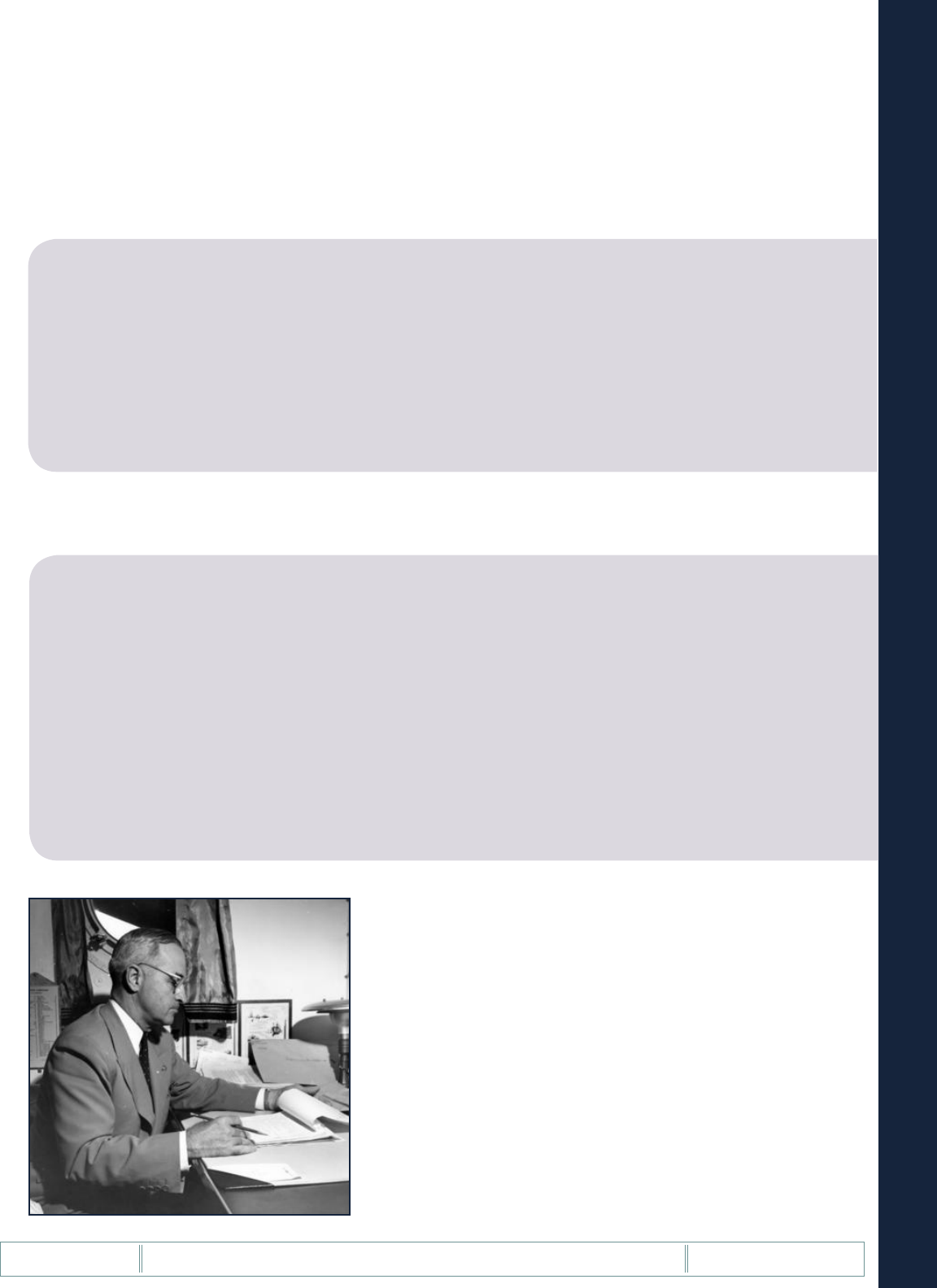
87
Osaka, Japan, following American firebombing, June 1, 1945.
(Image: National Archives and Records Administration, 342-FH-3A-3773.)
ATOMIC BOMBS
The War in the Pacific
LESSON PLAN
TWO INTERPRETATIONS OF THE ATOMIC BOMB
INTERPRETATION 1
“This essay suggests that, given the intransigence of the Japanese military, there
were few ‘missed opportunities’ for earlier peace, and that the alternatives available
to President Truman in the summer of 1945 were limited. In the end, Japan needed
‘external pressure’ in the form of the atomic bombs for its government to decide
to surrender.”
Sadao Asada, “The Shock of the Atomic Bomb and Japan’s Decision to Surrender: A Reconsideration,” Pacic Historical
Review 67, no. 4 (1998): 477–512.
INTERPRETATION 2
“The choices for the Truman administration in 1945 were not simply the A-bomb
versus invasion, or even the A-bomb and invasion. There were other strategies,
both diplomatic and military, that the administration—had it desired—might have
chosen instead of the atomic bombing. It was important to realize that the
administration had felt no desire to avoid using the A-bomb and thus did not seek
ways by early August to end the war without the atomic bombing.”
Barton J. Bernstein, “Introducing the Interpretive Problems of Japan’s 1945 Surrender: A Historiographical Essay on Recent
Literature in the West,” in The End of the Pacic War: Reappraisals, ed. Tsuyoshi Hasegawa (Stanford: Stanford
University Press, 2007).
Returning from the Potsdam Conference, President Harry S.
Truman prepares his “report to the nation” aboard the USS
Augusta, August 6, 1945.
(Image: United States Army Signal Corps. Harry S. Truman Library & Museum, 63-1453-47.)
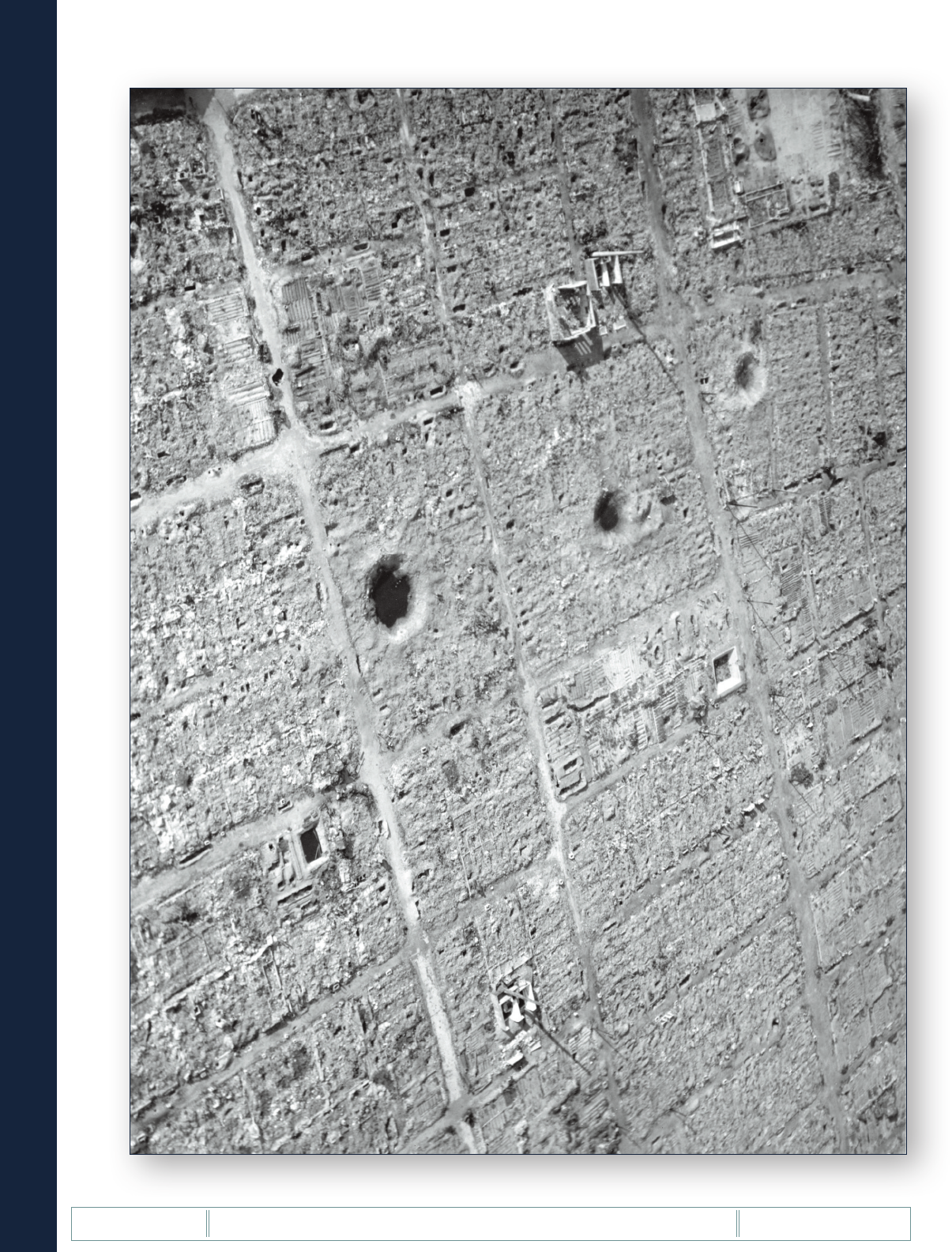
88
ATOMIC BOMBS
The War in the Pacific
LESSON PLAN
Osaka, Japan, following American firebombing, June 1, 1945.
(Image: National Archives and Records Administration, 342-FH-3A-3773.)
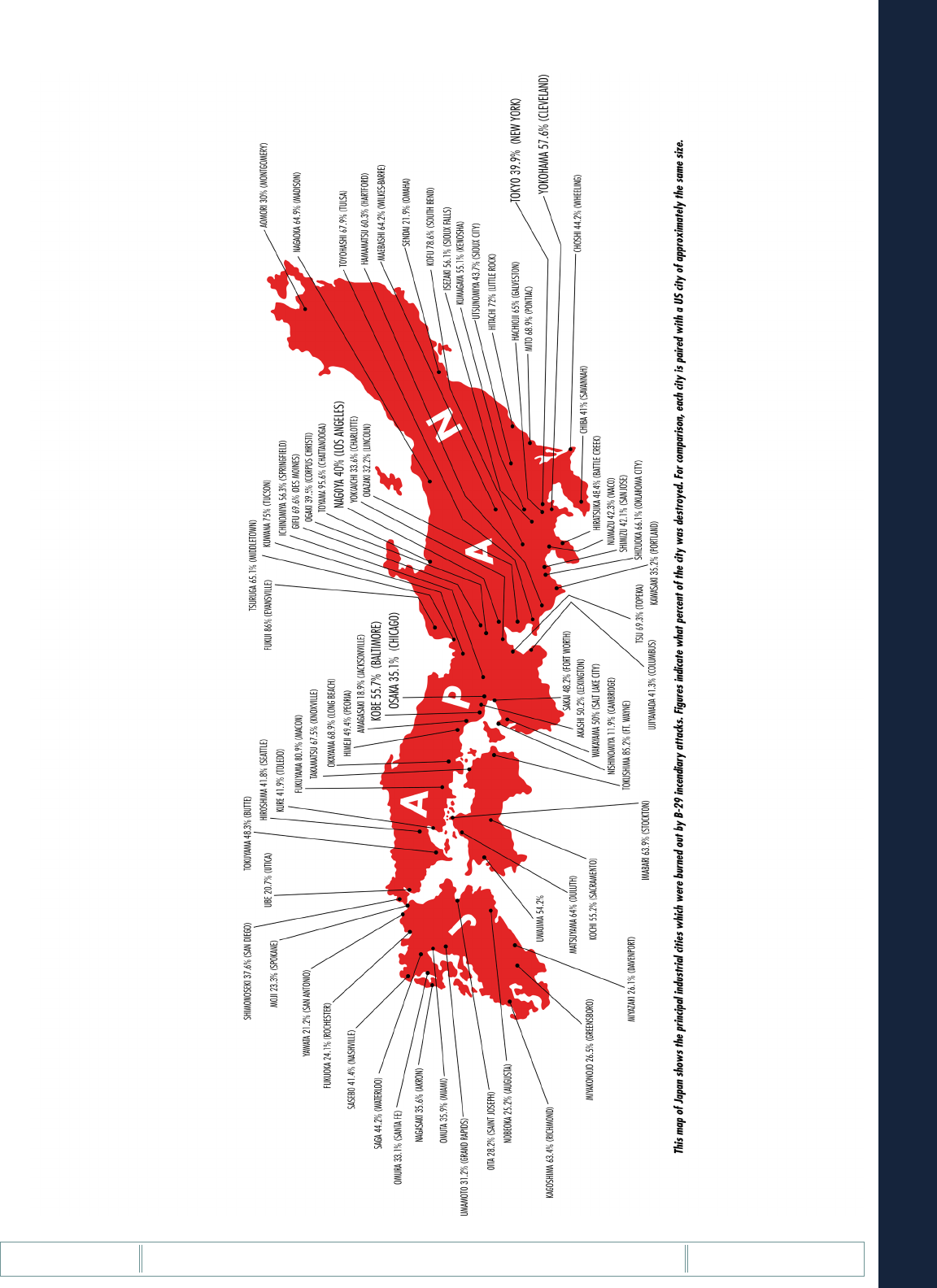
89
ATOMIC BOMBS
The War in the Pacific
LESSON PLAN
This map, produced after the war, shows the extent of the damage inflicted upon Japanese cities as a result of US B-29
firebomb attacks. For comparison, each Japanese city is paired with a US city of approximately the same size.
(Image: Oce of War Information.)
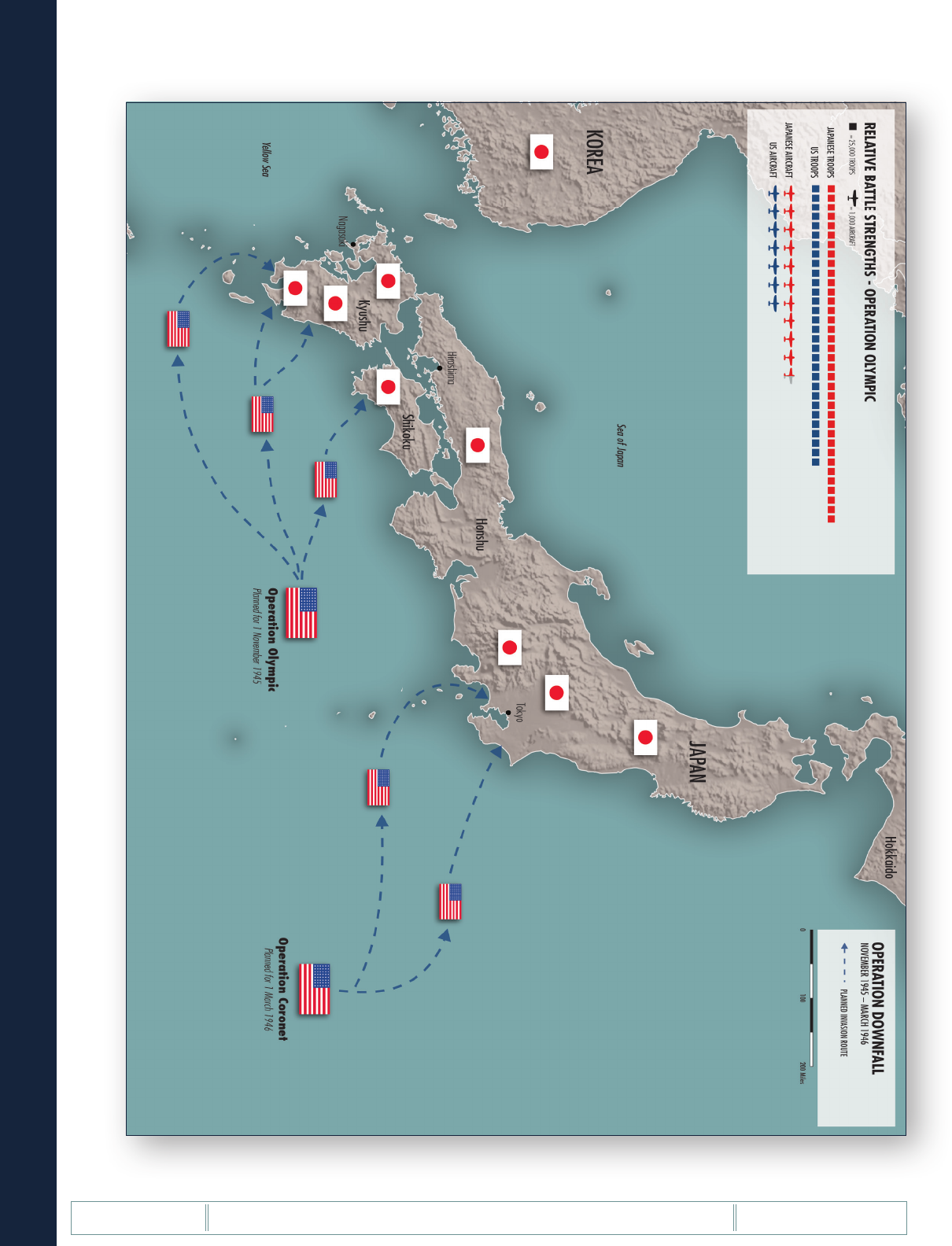
90
ATOMIC BOMBS
The War in the Pacific
LESSON PLAN
As the United States prepared for Operation Downfall, the largest amphibious operation ever planned, Japan initiated a massive troop buildup to
defend its home islands. (Image: The National WWII Museum.)

91
ATOMIC BOMBS
The War in the Pacific
LESSON PLAN
INTERPRETATION 1
Directions: For each primary or secondary source that you examine, record any evidence that you
believe supports the interpretation below. For each piece of evidence you record, write a brief
explanation of how or why it supports the interpretation. Ask for an additional copy of this sheet if
you run out of space.
Interpretation: “This essay suggests that, given the intransigence of the Japanese military, there were
few ‘missed opportunities’ for earlier peace and that the alternatives available to President Truman
in the summer of 1945 were limited. In the end, Japan needed ‘external pressure’ in the form of the
atomic bombs for its government to decide to surrender.”
Sadao Asada, “The Shock of the Atomic Bomb and Japan’s Decision to Surrender: A Reconsideration,” Pacic Historical Review 67, no. 4 (1998): 477–512.
EVIDENCE
1:
Explanation:
2:
Explanation:
3:
Explanation:
4:
Explanation:
5:
Explanation:
STUDENT WORKSHEET
YOUR NAME: DATE:
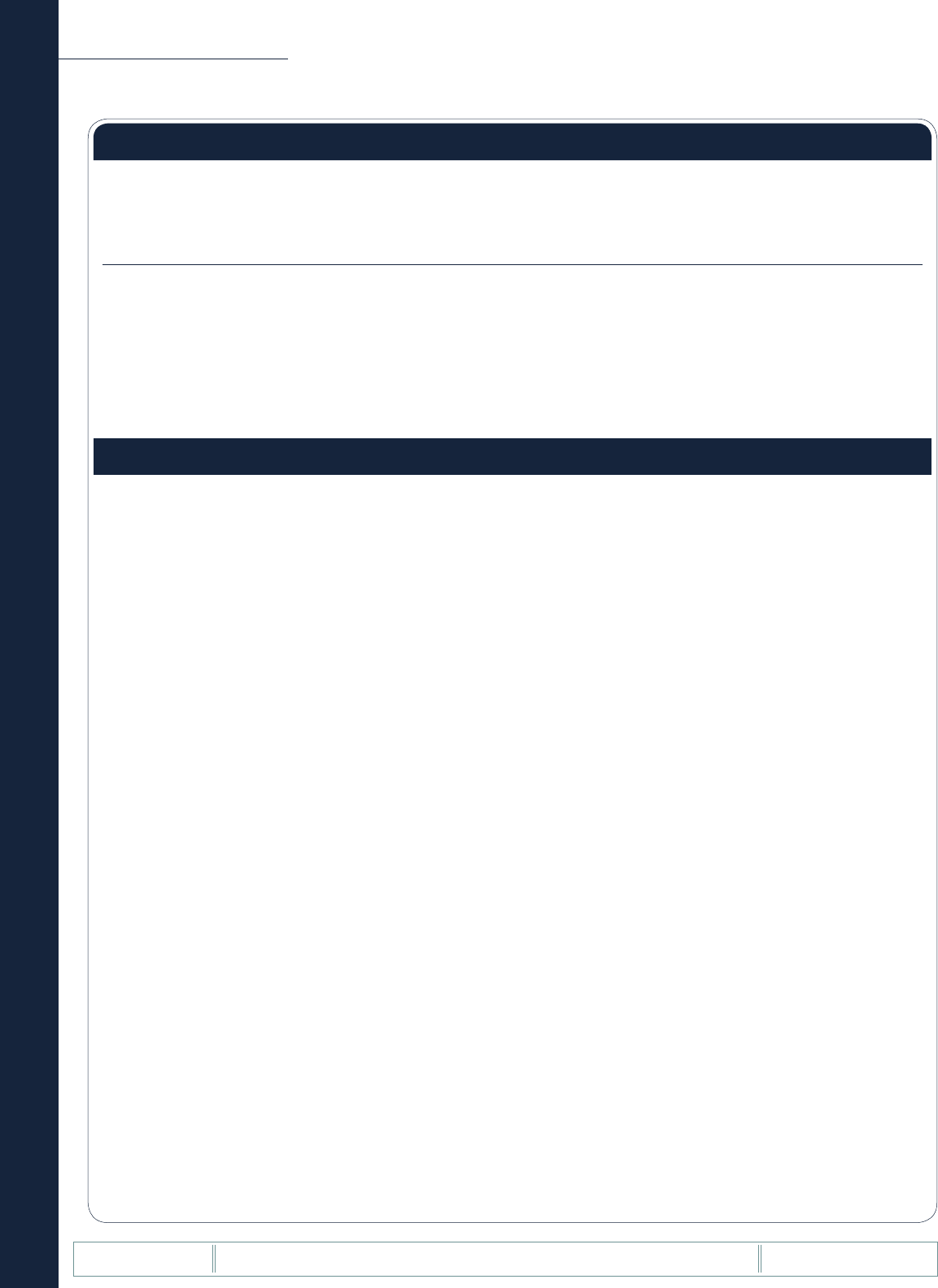
92
ATOMIC BOMBS
The War in the Pacific
LESSON PLAN
INTERPRETATION 2
Directions: For each primary or secondary source that you examine, record any evidence that you
believe supports the interpretation below. For each piece of evidence you record, write a brief
explanation of how or why it supports the interpretation. Ask for an additional copy of this sheet if
you run out of space.
Interpretation: “The choices for the Truman administration in 1945 were not simply the A-bomb
versus invasion, or even the A-bomb and invasion. There were other strategies, both diplomatic and
military, that the administration—had it desired—might have chosen instead of the atomic bombing.
It was important to realize that the administration had felt no desire to avoid using the A-bomb and
thus did not seek ways by early August to end the war without the atomic bombing.”
Barton J. Bernstein, “Introducing the Interpretive Problems of Japan’s 1945 Surrender: A Historiographical Essay on Recent Literature in the West,”
in The End of the Pacic War: Reappraisals, ed. Tsuyoshi Hasegawa (Stanford: Stanford University Press, 2007).
EVIDENCE
1:
Explanation:
2:
Explanation:
3:
Explanation:
4:
Explanation:
5:
Explanation:
STUDENT WORKSHEET
YOUR NAME: DATE:
